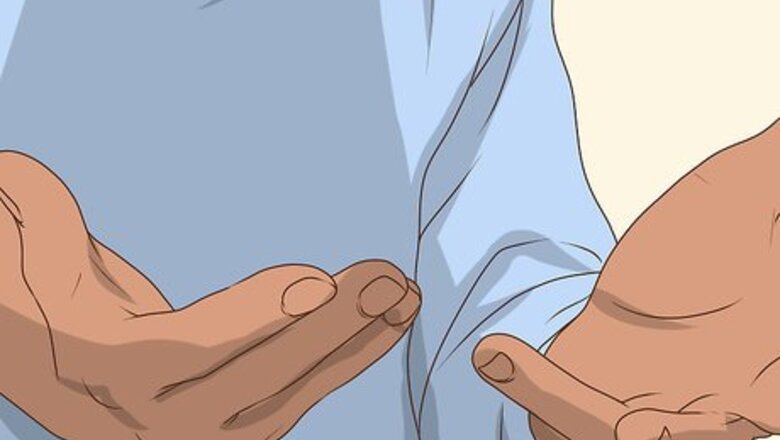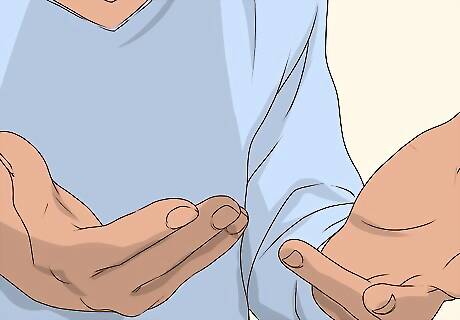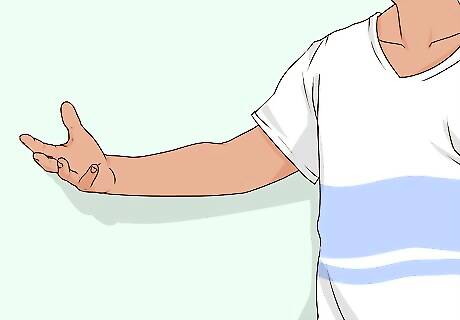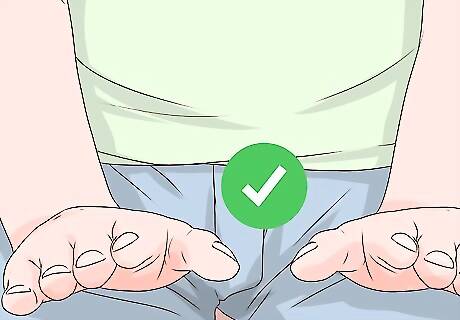
views
Mastering Effective Hand Gestures

Use hand gestures to add emphasis to speech. Hand gestures can be a way to add more force to what you're saying. These are often known as "illustrative gestures." It can be used to convey intensity, confidence, and even be used to garner attention to a point you're trying to make. Use a solid shaking fist to knock home an extremely important point you're trying to make. Be careful to not use an irritated voice to accompany it or it can come off as anger. If you are giving a presentation, use your hand to highlight a particular paragraph or slide that contains important information. Pointing can be used to literally make a point , or to accompany something like, "This one's important," or "Let me tell you." It can also be used as playful gesture to acknowledge someone. Be careful about pointing directly at someone, though, as this can come off as rude or even aggressive. Make sure your hand gestures match up to your speech. Do not try to add emphasis to a point that is not worth emphasizing, or add force to a point that is not meant to be forceful.

Use open hands and palms up for a positive effect. Whether you're speaking in front of a large group of people or one individual, hands facing up usually invite positive responses from people. Combined with an outstretching of your arms, it can communicate effectiveness, acceptance, and trustworthiness. If you use this gesture with a shrugging of the shoulders it can give off a feeling of uncertainty, so you will also want to monitor other parts of your body, too. Palms down typically gives others a feeling of confidence because they give you an aura of confidence or even dominance.

Keep hands behind your back to show confidence. Much like hands up front can show defensiveness, hands behind the back with an exposed torso shows confidence. This is especially an effective hand gesture if you are walking side-by-side with someone and communicating with them. This demonstrates that you are open to making yourself vulnerable, and not worried about protecting yourself with your hands. This gesture is especially useful to gain someone's trust.
Finding Uses for Hand Gestures

Use persuasive hand gestures. You can give off an air of authority and be more convincing by using hand gestures to seem persuasive. This is not going to necessarily compensate for mistakes in speaking, but can make you a more effective communicator. For example, the "steeple" is when you press your finger tips together to form a gesture that resembles a church steeple. This is a gesture commonly used by superiors talking to subordinates and people like managers and lawyers. It gives off a sign of confidence and conveyance of command over a subject.

Use hand gestures to aid in memorization. Just as talking about what you learn helps encode memories more effectively, hand gestures have a similar affect. Research shows that people who gesture while speaking or completing a task, are more likely to make it a memory than those not gesturing. Thus, gesturing while doing a task or speaking can be crucial to the first steps of storing memories away. When you have to memorize something, such as a speech, or directions, teach yourself gestures that go with each important moment. Get in the habit of gesturing while you study. People who are taught gestures to accompany new vocabulary and language are more likely to later recall those words later on by using the gestures they have learnt. When a child is taught a specific hand gesture to accompany new words and sentences, the memory of it is more likely to stick around.

Use hand gestures to recall information. When you are having trouble remembering information, gesturing with your hands can help you bring the words to mind. If you have trouble recalling information as you speak, gesturing with your hands can help.
Avoiding Ineffective Hand Gestures

Avoid using hand gestures that convey nervousness or diffidence. Even if you think you are comfortable talking to someone, a number of ways you move your body can betray this. Certain hand gestures show nervousness, timidity, and even submissiveness. Hands in your pockets, for example, gives off a signal you may be nervous. Hands crossed in front give off a notion of weakness or timidity as if you are in need of protection. Squeezing hands together is also a gesture that can convey a "self-soothing" gesture that you are nervous or fearful.

Don't cause a distraction with your hands. While hands can certainly make you a more effective communicator, and even cause people to be more comfortable around, they can also detract from your ability to communicate effectively. It is recommended keeping your hand gestures in a "box," while talking to others; a space from the top of your chest to the bottom of your waist. What this means is you should keep within certain parts of your body because then it allows people to keep looking at you and what you're saying, rather than trying to track your hands.

Don't use hand gestures to compensate for verbal sputtering. Sometimes people who have trouble finding words use hand gestures as a sign of nervousness or distraction. Avoid doing this as it does not help clarify your point anymore, but only serves to likely confuse people more. If you find yourself unable to come up with what you want to say next, slow your hands down. Perhaps put them in a calming gesture in front of you, as this is better than using wild hand movements to exasperate difficulties communicating.



















Comments
0 comment